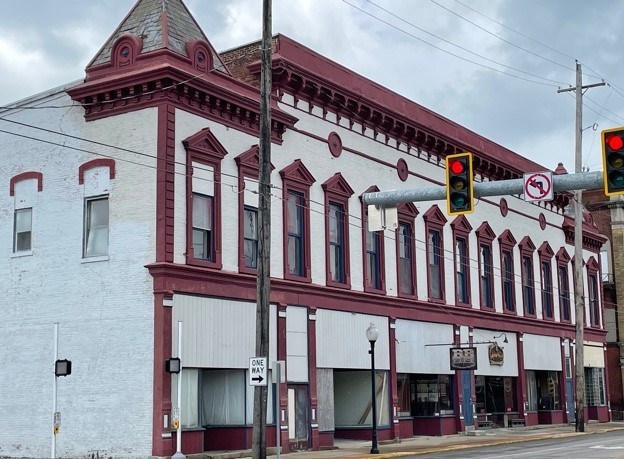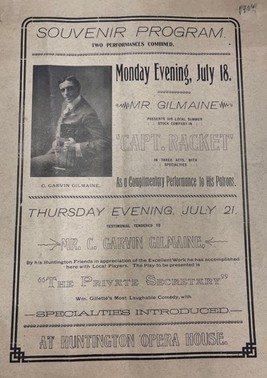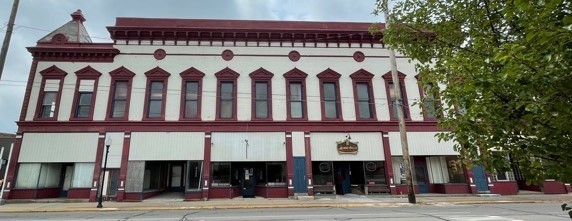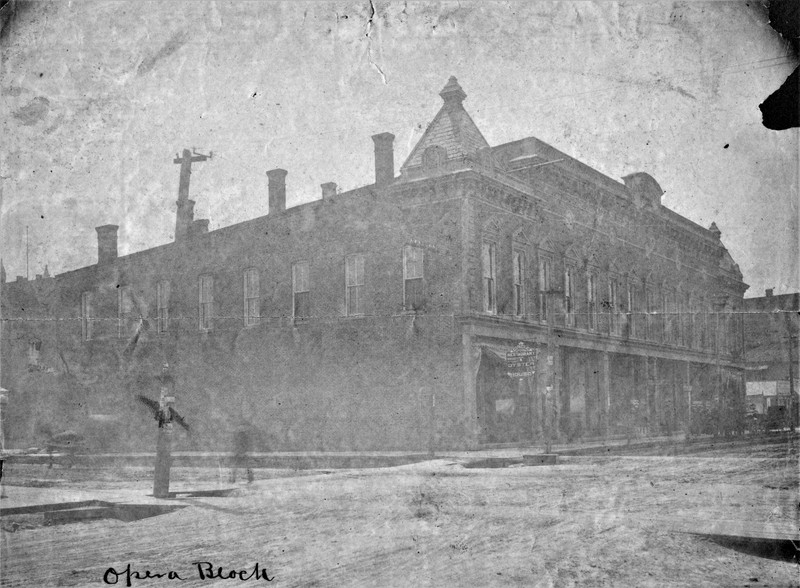Opera House
Introduction
Text-to-speech Audio
After residents expressed dismay over nearby towns having an opera house but one did not exist in Huntington, Ground broke in July 1881 for the Opera House on East Market Street. The performance venue was on the upper floor, with shops on the ground floor. Like many venues of its time, the floor was flat with a raised performance platform at one end.
Images
Opera House - Oblique View (2021)

1904 Opera House Program

Opera House - Front View (2021)

Opera House -(about 1900)

Backstory and Context
Text-to-speech Audio
Responding to cries from residents, local businessmen got together and proposed the Opera House. The lower floor was dedicated to rooms for various businesses. The upper floor, the opera house, provided live theater for about 500 people on the main floor and 300 more in the balcony. Performances ranged from theater performances, vaudeville shows, concerts, political speeches, motion pictures and of course, opera.
When the Huntington Theater opened in 1904 with its sloped floors and larger capacity, the Opera House closed for performance purposes. Over the years, the building has been many different establishments (Moose Hall, Challenge Tire, Petre Cigars, law offices, gymnasium, Tip Top Café tavern, Palace Café, Kroger’s Grocery, and tax preparers. At various times the second floor has been used for small business offices and/or apartments.
The Huntington County Interim Report, 2nd Edition, labels the architecture style as Victorian Gothic. The style was short lived in popularity, lasting only from about 1875 to 1885 in Indiana. “Architects of the High Victorian Gothic style favored heavy, structural detailing. Buildings of the style are usually irregularly shaped and nearly always of masonry construction.” Victorian Gothic features in this building are the use of heavy brickwork, large scale and bold forms used. Col. James Woods was the architect on this building and was one of the “well-traveled architects of the 1875-1900 period. He specialized in theatre and opera house design, particularly their interiors, and gained commissions coast to coast.” The Opera House Building is location number 101 on the National Register of Historic Places registration form for the Huntington Courthouse Square Historic District which was approved in 1992.
Sources
- Huntington County Interim Report 2nd Edition, Indiana 1982. This book can be located at the Huntington City-Township Public Library. hctpl.info.
- Schmidt, Sarah, “ Opera House had exciting, but short, life,” Herald-Press [Huntington, IN] 21 Oct 2012
- “Opera House,” The Huntington Democrat [Huntington, IN] 14 Jul 1881
- “High Victorian Gothic,”, IN.gov, accessed July 13, 2021, https://www.in.gov/dnr/historic-preservation/learn-about-topics/buildings-and-bridges/architectural-styles/high-victorian-gothic-style/
- “James Madison Wood (Architect)”, Pacific Coast Architecture Database, Accessed July 13, 2021, http://pcad.lib.washington.edu/person/2240/#:~:text=R%C3%A9sum%C3%A9-James%20M.,national%20reputation%20in%20this%20area.
- National Register Digital Places. National Registry of Historic Places. Accessed July 22, 2021. https://npgallery.nps.gov/NRHP/GetAsset/85461645-f775-4cf8-a822-d8525b7cf0ba
Huntington City-Township Library, hctpl.info, staff photo
Collections of the Huntington City-Township Library, hctpl.info
Huntington City-Township Library, hctpl.info, staff photo
Collections of the Huntington City-Township Library, hctpl.info
